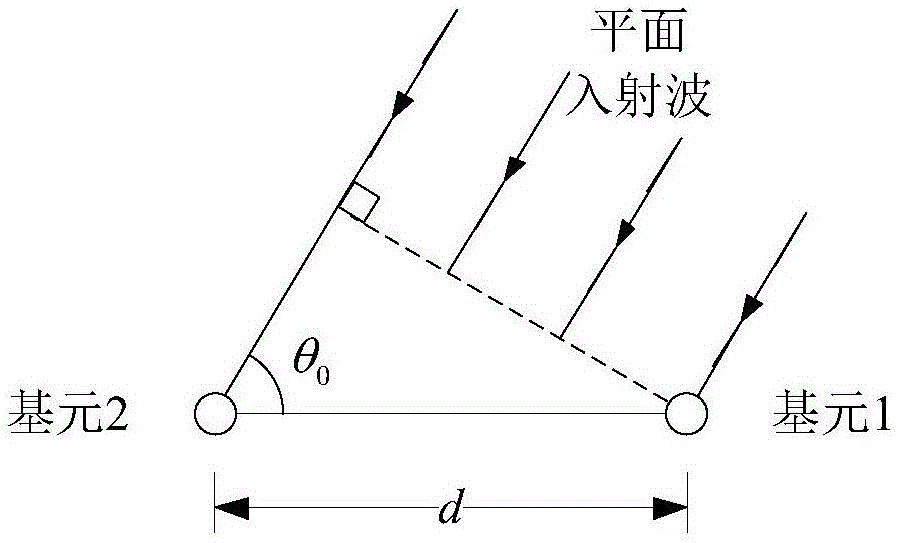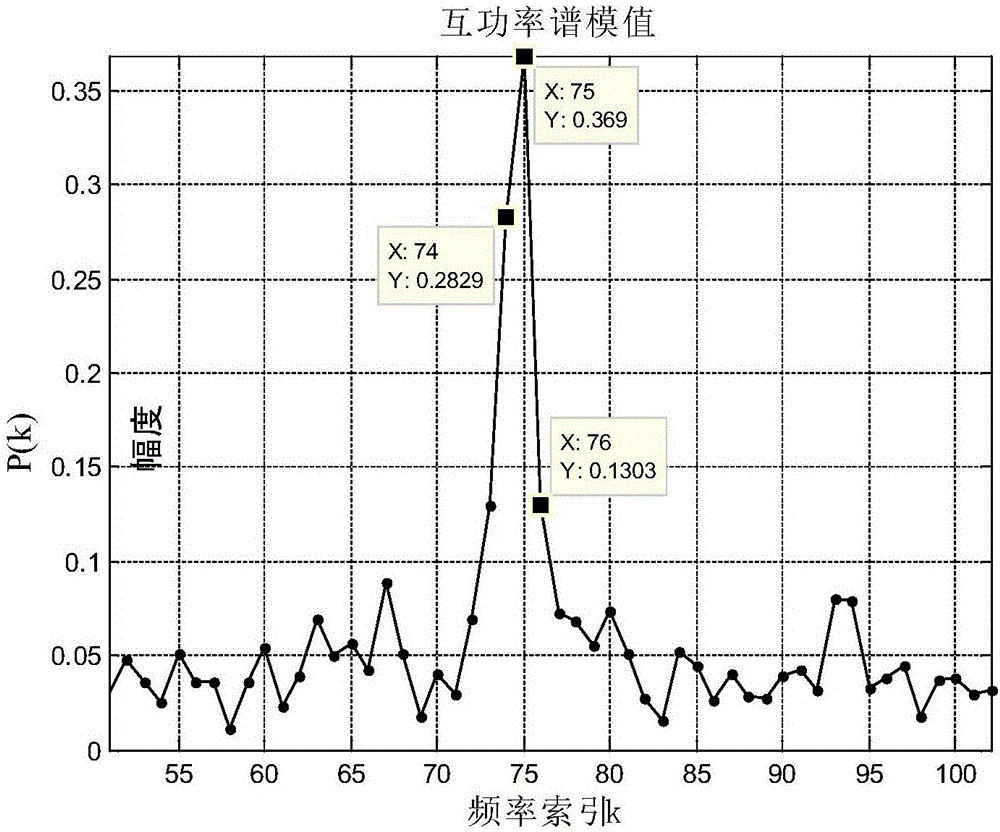Frequency estimation-based dual-array element sinusoidal signal direction of arrival estimation method
A technology of sinusoidal signal and incoming wave direction, which is applied in the field of signal processing and can solve the problems of signal spectrum leakage and great influence on direction finding accuracy.
- Summary
- Abstract
- Description
- Claims
- Application Information
AI Technical Summary
Problems solved by technology
Method used
Image
Examples
Embodiment 1
[0123] The simulation signal parameters are set as follows: signal amplitude A=1, initial phase Number of sampling points N=1024, sampling frequency f s =4000Hz, then the frequency resolution Δf of discrete Fourier transform=f s / N=3.9063Hz, signal frequency f 0 =291Hz, array element spacing d=0.5m, propagation velocity of sinusoidal signal in medium c=1500m / s (propagation velocity of sound in water), signal incoming wave direction θ=π / 4rad, signal-to-noise ratio SNR=0dB, Set relative deviation threshold δ 0 = 0.1.
[0124] image 3 Shown is the cross-power spectrum modulus of the simulated dual array element sinusoidal signal with a frequency of 291Hz, from image 3 It can be seen that the discrete frequency index corresponding to the maximum value of the cross-power spectrum modulus P(k) is 75, and the second maximum value index is 74.
[0125] Search for the index corresponding to the maximum value of the cross-power spectrum modulus P(k) to get k 0 =75, take P(k) a...
Embodiment 2
[0143] The simulation signal parameters are set as follows: signal amplitude A=1, initial phase Number of sampling points N=1024, sampling frequency f s =4000Hz, then the frequency resolution Δf of discrete Fourier transform=f s / N=3.9063Hz, signal frequency f 0 =390Hz, array element spacing d=0.1m, propagation velocity of sinusoidal signal in medium c=340m / s (propagation velocity of sound in air), signal incoming wave direction θ=π / 3rad, signal-to-noise ratio SNR=3dB , set the relative deviation threshold δ 0 = 0.1.
[0144] Figure 4 Shown is the cross-power spectrum modulus of the simulated dual array element sinusoidal signal with a frequency of 390Hz, from Figure 4 It can be seen that the discrete frequency index corresponding to the maximum value of the cross-power spectrum modulus P(k) is 100, and the next maximum value index is 99.
[0145] Search for the index corresponding to the maximum value of the cross-power spectrum modulus P(k) to get k 0 =100, take P(...
PUM
 Login to View More
Login to View More Abstract
Description
Claims
Application Information
 Login to View More
Login to View More - R&D
- Intellectual Property
- Life Sciences
- Materials
- Tech Scout
- Unparalleled Data Quality
- Higher Quality Content
- 60% Fewer Hallucinations
Browse by: Latest US Patents, China's latest patents, Technical Efficacy Thesaurus, Application Domain, Technology Topic, Popular Technical Reports.
© 2025 PatSnap. All rights reserved.Legal|Privacy policy|Modern Slavery Act Transparency Statement|Sitemap|About US| Contact US: help@patsnap.com



